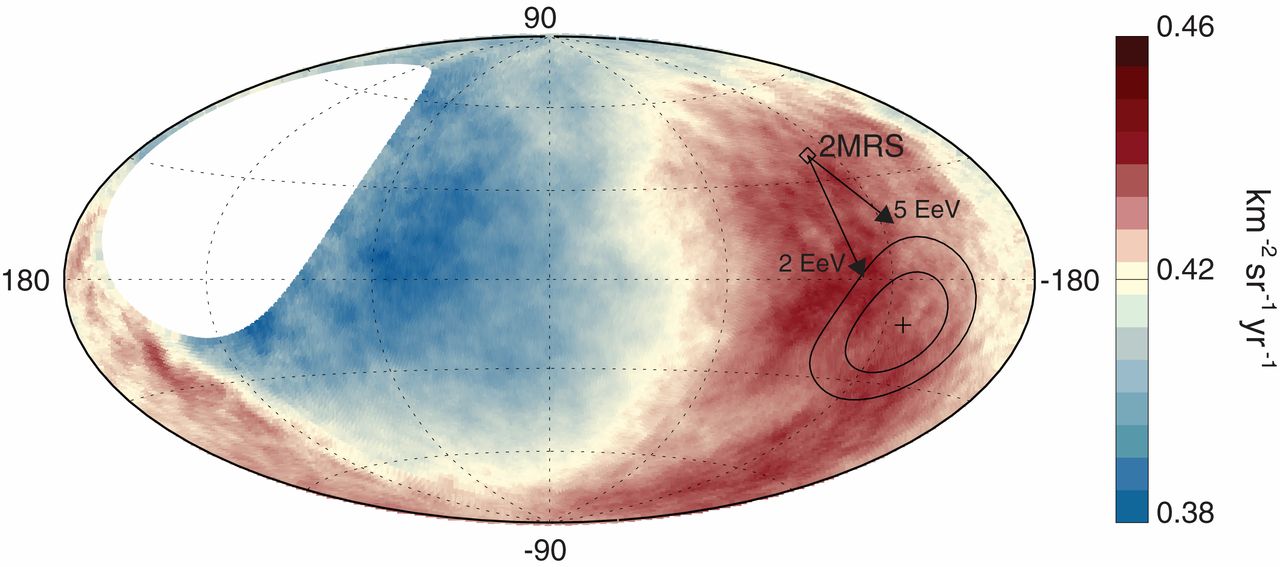|
I guess most colleagues in the high-energy astroparticle physics domain accepted the idea of the extragalactic origin of the highest energy cosmic rays (UHECR, E>10^18eV) a long time ago: we have already problems to find sources in our Galaxy which are able to accelerate particles up to the knee in the cosmic ray energy spectrum at around 10^15eV. It is therefore hard to imagine galactic accelerators reaching to the ultra-high energies. In addition, one would expect these UHECR particles to show a clear anisotropy toward the Galactic Plane if they were produced there, something that is not observed... Nevertheless, the recent result of the Pierre Auger Collaboration does now provide further evidence for the extragalactic origin of UHECRs. As published in Science, 22 Sep 2017, the arrival direction of particles above 8*10^18eV shows a clear dipolar structure. The amplitude is much stronger than what would be expected from the Compton-Getting effect induced by the movement of the Earth with respect to the cosmic-ray background. Even more interesting, the direction of the dipole (black cross in the figure below) seems to be consistent with the distribution of galaxies in our neighborhood (once the potential magnetic deflections in the galactic magnetic field are taken into account). The direction of galaxy distribution dipole is given as "2MRS" in the figure below, possible magnetic deflections are indicated by the two arrows. More about UHECRs (mainly my own contributions to the field) can be found here: Cosmic rays Sky map in galactic coordinates showing the cosmic-ray flux for E ≥ 8 EeV smoothed with a 45° top-hat function. The galactic center is at the origin. The cross indicates the measured dipole direction; the contours denote the 68% and 95% confidence level regions. The dipole in the 2MRS galaxy distribution is indicated. Arrows show the deflections expected for a particular model of the galactic magnetic field on particles with E/Z = 5 or 2 EeV. (from Science, 22 Sep 2017 and arXiv:1709.07321)
0 Comments
Leave a Reply. |
AuthorMyself ;-) Archives
January 2024
Categories
All
|

 RSS Feed
RSS Feed